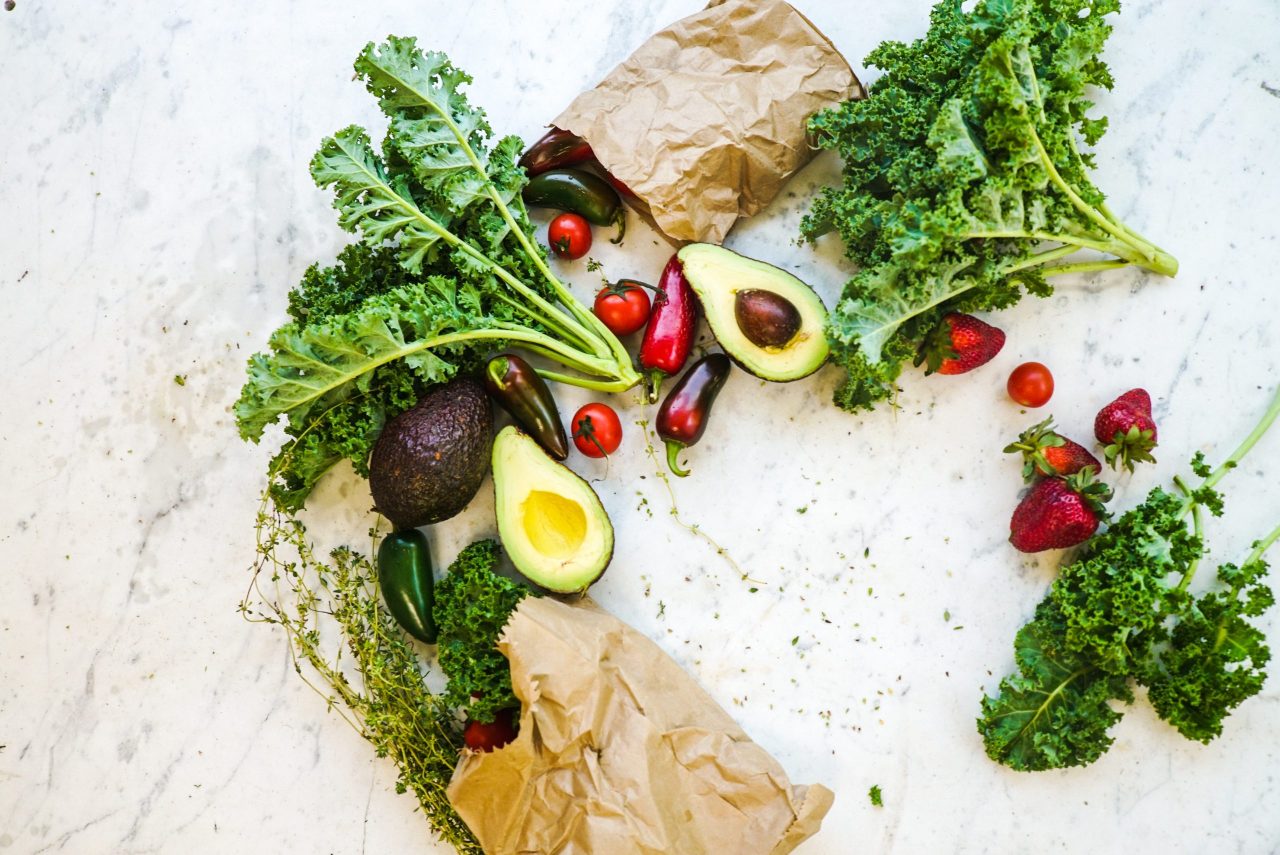
Tiny Shifts Towards Plant-Based Eating For Those Who Are On The Verge Of Giving Up
You’ve been struggling to add more whole fruits, vegetables, and grains to your daily diet. You’ve been trying to curb your sweet tooth, but let’s face it. The satisfaction from a warm, gooey, melt-on-your-tongue cinnamon bun just isn’t the same as a fig granola bar.
You’re not giving up meat, ice cream, or coffee. Don’t even get you started.
And that’s okay.
Eating plant-based is about making healthier choices, curiosity, and exploring your food preferences. It’s not about food shaming or deprivation. There’s a reason why you wanted to try this lifestyle. Don’t lose sight of your big picture. I understand how discouraging it is to go on social outings with friends and feel restricted in terms of what you can eat. I want you to consider that you can eat whatever you want at any time. You still have that power.
According to a Forks over Knives definition, a plant-based lifestyle consists of fruits, vegetables, tubers, whole grains, and legumes. It excludes or minimizes meat (including chicken and fish), dairy products, and eggs, as well as highly refined foods like bleached flour, refined sugar, and oil.
The journey to reducing processed foods, dairy, or meat takes time. Change isn’t going to happen overnight. It doesn’t mean you can’t start eating plant-based. Don’t let a few technicalities stop you.
1. You don’t need to put a label on your wellness experience.
Sometimes the most significant setback we face in our wellness journey is trying to fit into society’s mold. We’re so caught up trying to be vegan, vegetarian, or whatever the latest trend is that we forget the goal is overall wellness or perhaps animal advocacy. We get into Twitter wars about our lifestyle instead of implementing healthy habits the best we know how. You do not have to put a label on your wellness experience.
You don’t have to defend your choices. You’re not on trial. You don’t have to debate. Yes, people might be curious about your eating choices, but don’t feel you have to justify your experience. If you want to give an explanation, don’t underestimate the power of a story. Instead of saying, “I don’t want to eat animals for environmental reasons,” you can tell a story about a video you watched or a person you met who recovered their health by eating plant-based foods.
Nobody is living your life for you. Nobody is living with the consequences of your decisions but you. Nobody deals with your skin breakouts, weight gain, or irritable gut. Just you. There’s power when you take responsibility for your life.
2. Come from a place of curiosity, not judgment.
You cannot enjoy your experience when you’re looking at yourself with scrutiny or waiting for your next big moment of failure. You’re still learning. You’re battling years of habit. You’re resisting holidays meals, summer vacations, and work food parties.
You will give in to food temptation. It’s expected. This is no cause to give up. Instead, get curious about why you crave a particular food. Own your cravings. You wanted the cheesecake. It tasted good. You enjoyed it. You’ll get on track another day. It’s not a big deal. It’s spiralling into thoughts of judgement and shame that prevent us from moving forward.
Curiosity says, “Hmmm, I wonder why I had that craving?” Sink into your body and explore how you were feeling. What happened that week? Were you stressed? Bored? Curiosity means you find out what drives your eating patterns, moods, and more about what you need for comfort. Cravings aren’t your enemy. Cravings are your navigation system and blueprint to your wants.
Nourishment is about much more than food. It’s about your life desires. Identify other ways you can manage your cravings besides food. Maybe you’re lonely and craving touch. Time to book a massage. Turn your phone off, light a candle, pray, practice gratitude. Allow yourself to gain pleasure and ease from other aspects of your life besides food.
3. Think about everything you get to have.
We often think about what’s missing when making lifestyle changes. Fixating on the foods you think you’re losing out on isn’t going to inspire motivation.
You don’t have to give up meat, dairy, eggs, or other food before transitioning to a plant-based diet. Take a plant-forward approach. Start where you’re most comfortable and take small steps through.
Add more plant foods as you go. Seek out plant-based recipes you’d like to try, order plant-based meals at a restaurant, trial a plant-based meal delivery kit. Explore different meat alternatives. Make a list of foods you’ve tried and how they taste. Try exotic fruits and vegetables. Make a trip out of it. Go to the local farmer’s market. Maybe even take a vacation in a new country that’s rich in plant-based food culture.
Make a game out of finding plant-based alternatives for the things you already love. Explore tantalizing smoothies, juices, and ice cream recipes. The possibilities are endless. Instead of thinking about everything you’re missing, think about everything you get to have.
4. Add more leafy greens into your routine.
Whole foods, especially leafy greens, promote health, processed foods promote disease. Even if you did nothing else, adding more greens into your diet will positively impact your health.
Here’s how to add more plants to your diet.
Consider adding leafy greens (spinach, kale, Swiss chard, arugula) into your everyday routine. Chop greens and add them to the last few cooking minutes of your soup or stew.
Use the leaves of greens (kale, lettuce) to make a sandwich wrap. Substitute your burger bun with a lettuce wrap. Chop greens and add them to your smoothie. You won’t even taste the difference.
Saute spinach with garlic, oil, and a bit of salt and pepper. Try kale chips. Wash the kale, pat it dry, rip off the leaves, baste leaves in oil and salt, line in a baking sheet and cook at 275 degrees Fahrenheit until crisp.
Add greens to baking by finely grating them or pureeing them into your batter. Juice your fruits and veggies and drink them before your next meal.
5. Subtract more processed foods from your day.
An article by Scientific America notes that we have microbes in our gut that control our food cravings (the ones that drool over sugar). Reducing processed food while increasing leafy greens can help reset those sugar bugs.
Here are a few tiny swaps.
Find a healthier alternative to your favorite snack by buying the snack with fewer ingredients or less processing. For example, purchase baked chips instead of fried.
Try swapping milk by trying a dairy-free option, like Coconut Bliss ice cream or an almond beverage. Swap potato fries for sweet potato fries. Swap sugar for stevia. Swap white bread for sprouted whole grain bread and white rice for whole wheat or wild rice.
6. Find inspiration—but not too much.
Find food and lifestyle inspiration from plant-based advocates—though sometimes watching too many of these advocates can leave you feeling more discouraged than motivated. If so, it’s okay to take a break from their content or unfollow them all together. Instead, find someone compassionate. Find someone on a similar journey as you who’s already overcome obstacles.
Read books, like… The Beauty Detox Solution by Kimberly Snyder. The China Study by Dr. Colin Campbell. Counsels and Diet and Foods by Ellen G. White. Oh She Glows by Angela Liddon, Deliciously Ella by Ella Woodward and Sweet Potato Soul by Jenne Claiborne
Watch documentaries on Netflix like… Forks over Knives. What The Health. Food Inc. and Fat, Sick & Nearly Dead.
7. Drink as much as you want.
Drink ample amounts of water to help flush out toxins, help reduce junk food cravings, transport nutrients and to think clearly.
How much water should you drink? According to brilliant minds at Harvard, a generally healthy person needs about four to six cups.
Here’s how to drink more water.
Don’t be afraid to spice up your routine. You can do this by adding fruits and veggies into your water for a refreshing taste, like mint, lemon, and cucumber.
Invest in a fancy-schmancy water bottle with a beautiful design that you just can’t stop reaching for. You can also invest in a smart water bottle that tracks your water consumption with an app on your phone, like the Hidratespark bottle.
Drink from a straw. According to Kristen Kizer, a registered clinical dietitian at Houston Methodist Hospital in Texas, drinking water through a straw causes you to swallow more water at a time than gulping from a bottle. It also makes it more accessible throughout the day.
It’s not a lost cause. I know you feel discouraged. You’re thinking maybe plant-based eating isn’t for you. I want you to remember that you’re allowed to start where you are. You don’t need to be the poster child for Whole Foods. You don’t need to give up anything before you begin. Start adding more leafy greens to your eating routine. That’s it. You can do it your way, in your style, at your pace. If plant-based eating is your goal, but you’re on the verge of giving up. Don’t. Be gentle with yourself. It’s about the tiny victories along the way, which are more than possible for you.
